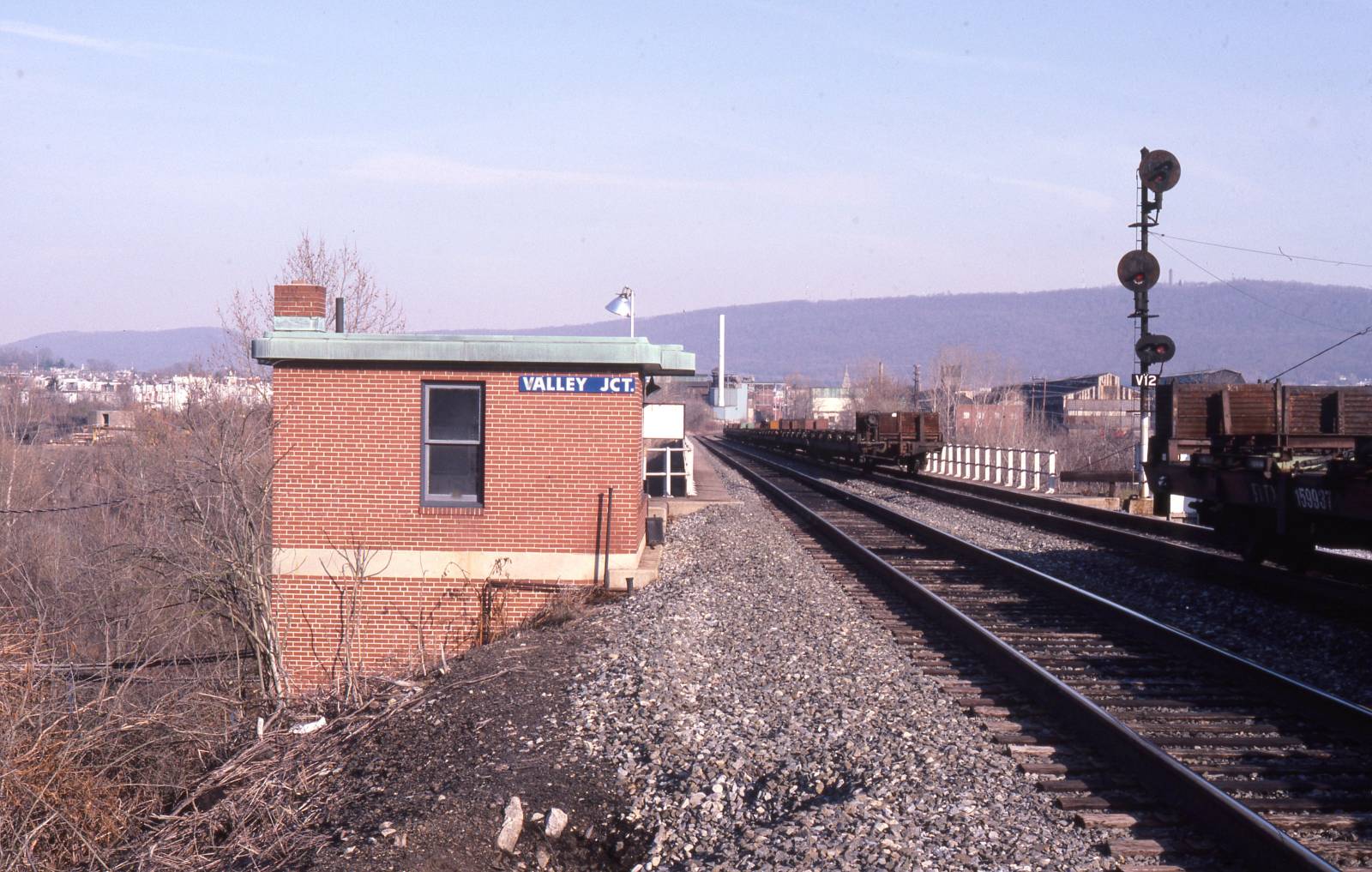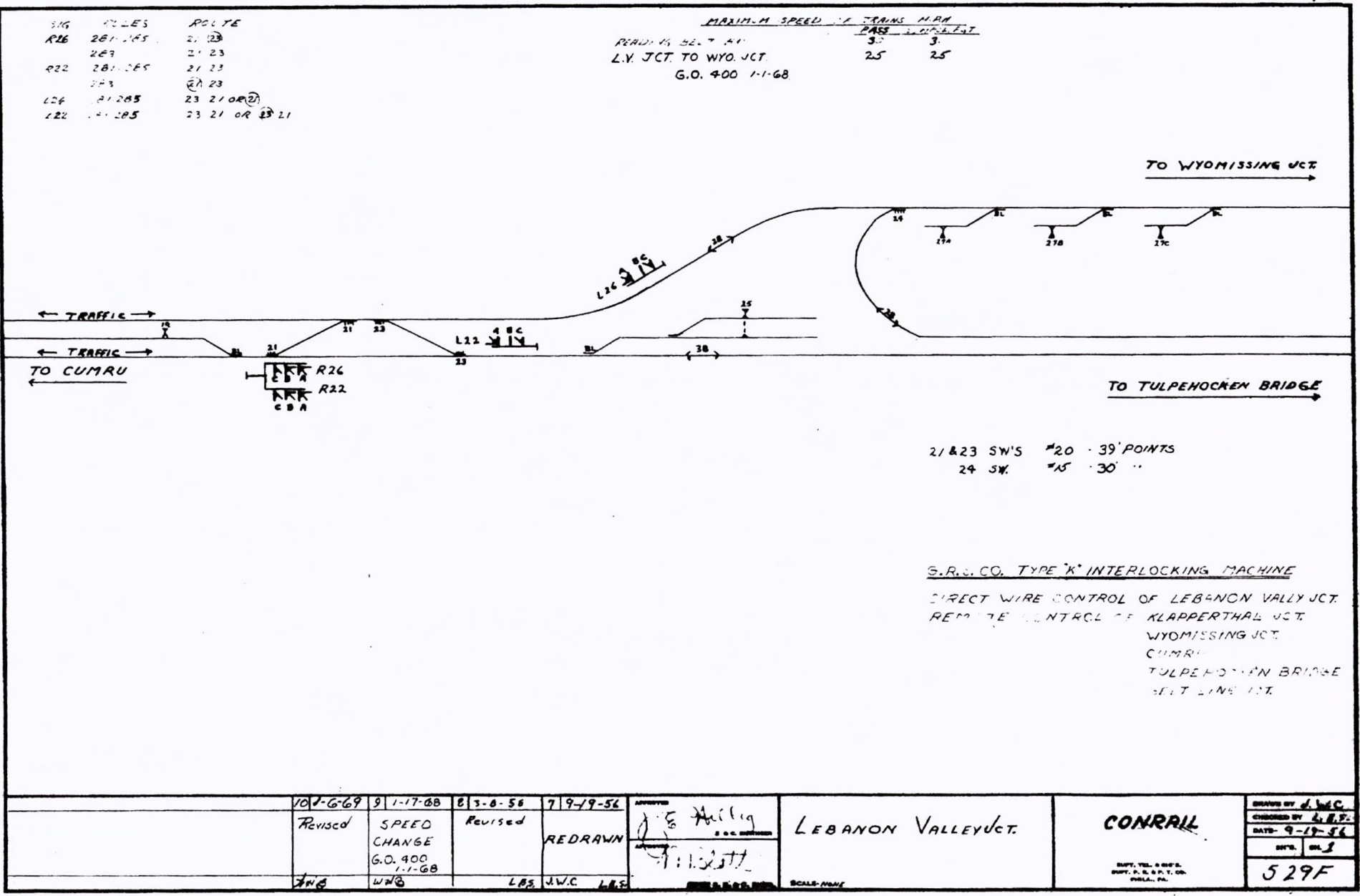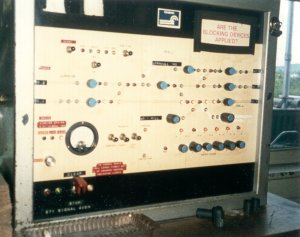The Reading Railroad was small in size, but rich in revenue due to its dominant positions in the anthracite coal fields of eastern Pennsylvania. As such it was able to punch far above its weight in the area of technical investment be it electrification, locomotive manufacture or signaling technology. A very early adopter of automatic signaling in the late 19th century with the Hall disc signal, when the Reading was confronted with plummeting demand for their premium coal product, their response was technical innovation to cut costs and increase competitiveness.
Once again the Reading turned to signaling and was an early adopter of the area interlocking concept that allowed for the closure of many manned interlocking stations, even in areas of high traffic density. Covered previously in my piece on North American Panel Towers, VALLEY JCT (officially LEBANON VALLEY JCT) tower was part of this technical overhaul that still stand to this day. Since I managed to come into possession of some interior photos I figured I might as well cover it in its own article.
The VALLEY JCT we all know today appears in the form of a squat, 1 story brick cabin adjacent to the Lebanon Valley bridge over the Schuylkill River that today carries part of the NS Harrisburg Line between Philadelphia and Harrisburg. However if you look at it from another angle, it is actually a multi-story tower facing the Reading Belt Line that passes under the Lebanon Valley Branch at that point. In fact there is no interlocking on the Lebanon Valley Branch at Valley Junction. The interlocking is actually on the Belt Line, hence the name Lebanon Valley Jct (as the Lebanon Valley Branch doesn't junction with itself). The reason for this misconception is that the operator's floor is more accessible to rail photographers.
VALLEY JCT was built in 1951, towards the end of the standalone interlocking tower era in North America. It had direct wire control of the aforementioned VALLEY JCT on the Reading Belt Line as well as the nearby Wyomissing Jct and less nearby Klapperthal Jct (CP-TITUS) , Cumru, Tuplehocken Bridge (CP-TULP) and Belt Line Jct (CP-BELT). As CTC projects went this was not exactly pioneering, but was still a good 5-10 years ahead of the curve.

It's local interlocking under direct wire control consists of a simple crossover that allows Belt Line trains to choose a ramp to the Valley Branch at Wyomissing Jct or continue on to coal country and/or Allentown via Belt Jct.

VALLEY JCT was built with a General Railway Signal Style K unit lever machine with sequential numbering starting at CP-TITUS and increasing to CP-BELT. It eventually gained an independent panel to control WALL interlocking in Lebanon, PA in 1968.




VALLEY JCT's CTC territory was in service up until the late 90's/early 2000's when a combined Conrail/Norfolk Southern re-signaling project updated CP-BELT, CP-TULP, CP-WALL and CP-WYOMISSING JCT. CP-CUMRU would be re-signaled around 2010 with CP-TITUS surviving until 2018 as it was targeted for removal and replacement instead of reconstruction. The original 1951 relay hut is still in place at CP-WYOMISSING JCT, complete with its Reading Company herald.
VALLEY JCT closed as an active interlocking in 1987 or 1990, depending on the source. This ambiguity is not uncommon with "CTC" towers as their territory is subject to remote control with a lingering local control option. Here is a video showing VALLEY JCT shortly before its closure with its territory in the configuration that would endure throughout the 1990's.
Towers survive after closure for a variety of reasons. Sturdy construction can make them too costly to demolish. Likewise, they might be too inaccessible to demolish easily. Sometimes towers find a new use like a that of a yard office or maintenance base, but a common fate in the 1980's was that of a glorified relay hut where the tower kept doing its signaling thing, just without people. I suspect this was the case with VALLEY JCT as it had a local direct wire interlocking and was was given the brickover treatment by Conrail in a similar fashion to the previously discussed COLA.
In another parallel to COLA, VALLEY JCT had its CTC machine removed (or I should say harvested as it is now in the possession of the Reading Technical Society) and the space replaced with desks and other office stuff. I call this phenomena "loungeification".
The brickover process did not necessitate the removal of either window panes or the shades.
These lockers could mean this was a maintenance crew sign-in location, or were simply left over from the period when VALLEY JCT acted as a manned interlocking tower.
Of course the tower had a bathroom, complete with its own radiator.
Despite the tower's door being busted open by locals, I was informed that nobody was actively living inside.
Behind the operator's room in the top floor is VALLEY JCT's relay room. This holds the interlocking logic for VALLEY JCT interlocking directly in front of the tower on the lower level under direct wire control from the GRS CTC machine next door. Relays are of the plug in variety that became popular after World War 2. Although all the relays had been removed, the plug bases and associated rack mounts were still present.
The wood mounted components were a nice touch and definitely gave off a 1950's vibe.
As did the Bakelite plug relay sockets. The wiring had been clipped for recycling when the interlocking logic was decommissioned and the remaining stubs had not yet attracted the eye of local metal salvage artists.
Charts still hanging on the wall as a reference for the maintainers.
Although I found no concrete documentation as to the date when this equipment was decommissioned, this slightly more modern looking jumper panel for terminating external connections hints that the tower had seen use beyond its closing date as a relay room.
One might expect a tower like VALLEY JCT to have a lower level that is also packed with relays and other equipment. The reality is that the ground floor served as a maintainer workshop and held the furnace.
Pretty sure that white stuff around the furnace is asbestos.
Looking up one can see the cableways for the local interlocking and, presumably the CTC code line, descending from the relay room above.
Although VALLEY is still in good condition and not made of wood, the lack of security and any evidence that the railroad cares presents a long term threat to the tower if it becomes an attractive nuisance. The location precludes much railroad use, except maybe as a stairway down to CP-LEISEY as well as use or preservation by third parties. As always get out and get your own photos because at some point VALLEY JCT will become just another pile of rubble.























Great photos! This area was a hotbed of activity in Reading days, as is well-documented online. Sad to see it in this lowly state...
ReplyDelete